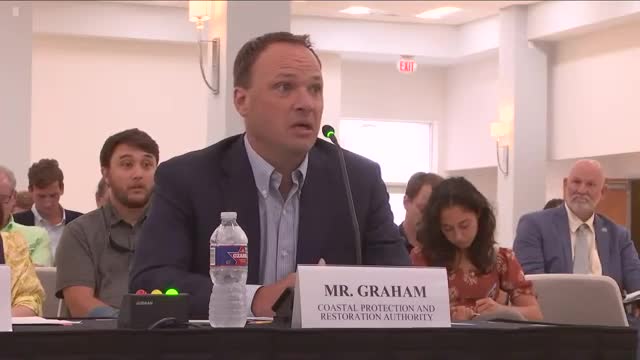Funding challenges threaten vital coastal restoration efforts
August 03, 2024 | Natural Resources: House Committee, Standing Committees - House & Senate, Congressional Hearings Compilation

This article was created by AI summarizing key points discussed. AI makes mistakes, so for full details and context, please refer to the video of the full meeting. Please report any errors so we can fix them. Report an error »

In a recent government meeting, officials discussed the challenges faced by the Coastal Protection and Restoration Authority (CPRA) as it manages a substantial annual budget of approximately $1.71 billion. Despite a small team, the CPRA is tasked with orchestrating extensive restoration efforts along the coast, but it is encountering significant hurdles that could impact its effectiveness.
Key among these challenges is the need for reliable and robust funding. The CPRA relies heavily on the Gulf of Mexico Energy Security Act (GOMESA) as a cornerstone for its planning efforts. The agency produces an annual plan that includes three-year projections for various projects, ranging from feasibility studies to construction and maintenance. However, the execution of these projects is largely dependent on the private sector, which employs skilled professionals in engineering and coastal science. Interruptions in funding can lead to delays, job losses, and increased costs for individual projects, underscoring the importance of stable financial support.
Another critical issue raised during the meeting was the permitting timelines for projects. While the CPRA's plans are approved as interconnected suites of projects, they are often delivered individually. This piecemeal approach complicates the evaluation process, as regulators assess each project on its own merits rather than considering the collective benefits. This method can hinder progress, especially in areas where the landscape is already deteriorating.
As discussions continue, officials are urged to consider strategies that could streamline funding and permitting processes to enhance the effectiveness of coastal restoration efforts.
Key among these challenges is the need for reliable and robust funding. The CPRA relies heavily on the Gulf of Mexico Energy Security Act (GOMESA) as a cornerstone for its planning efforts. The agency produces an annual plan that includes three-year projections for various projects, ranging from feasibility studies to construction and maintenance. However, the execution of these projects is largely dependent on the private sector, which employs skilled professionals in engineering and coastal science. Interruptions in funding can lead to delays, job losses, and increased costs for individual projects, underscoring the importance of stable financial support.
Another critical issue raised during the meeting was the permitting timelines for projects. While the CPRA's plans are approved as interconnected suites of projects, they are often delivered individually. This piecemeal approach complicates the evaluation process, as regulators assess each project on its own merits rather than considering the collective benefits. This method can hinder progress, especially in areas where the landscape is already deteriorating.
As discussions continue, officials are urged to consider strategies that could streamline funding and permitting processes to enhance the effectiveness of coastal restoration efforts.
View full meeting
This article is based on a recent meeting—watch the full video and explore the complete transcript for deeper insights into the discussion.
View full meeting